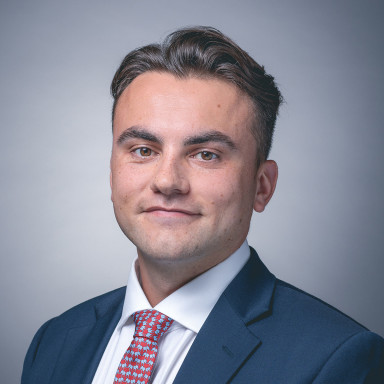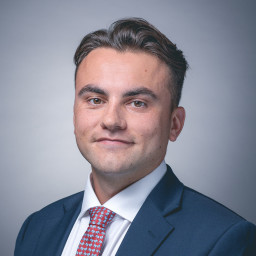A focus on income from companies based across the Asia Pacific region
Long-standing manager, Mike Kerley will be retiring in June 2024
Style headwinds and stock selection in China has impacted short-term performance
How it fits in a portfolio
Henderson Far East Income aims to provide a growing income and offers the potential for some capital growth. The managers look to achieve this by blending higher yielding companies alongside those with the potential for dividend growth. It offers broad exposure to markets in the Asia Pacific region such as Australia, South Korea, China and Hong Kong.
Given the trust's focus on income, it could be used as part of a more adventurous income portfolio, as it invests in some higher-risk emerging markets. Style-wise, the managers are more value oriented which means it could also sit alongside more growth tilting Asian funds as part of a long-term globally diversified portfolio.
When investing in closed-ended funds you should be aware the trust can trade at a discount or premium to net asset value (NAV).
Manager
Mike Kerley has managed this trust since the start of 2007. He joined Henderson (now Janus Henderson) in 2004 and has managed Asian equities ever since. However, it was announced in the latest annual results that he will be retiring in June 2024. Until then, he will continue to support the current co-manager, Sat Duhra.
The board have passed the baton over to Duhra, who will become sole manager of the trust. He has been co-manager since 2019 and has worked alongside Kerley for several years. He joined Henderson (now Janus Henderson) in 2011 and co-manages their Asian Dividend Income strategy. Prior to this he held analyst positions at Nomura Asset Management and Credit Suisse with experience across European and emerging market equities.
Process
Dividends can contribute significantly to the total return of an investment, especially in Asia. The managers believe that the region is a fertile hunting ground for companies offering income, capital growth or a combination of the two.
The team uses a value-driven approach, looking for companies that have been overlooked by other investors and can be bought at a share price that's lower than their future potential means it could be. Robust cash flows are essential, as this is ultimately what should help support dividends over the long run. Low levels of debt play an important part in this too.
When it comes to generating new ideas, they use a combination of quantitative and qualitative analysis. This means they spend lots of time crunching the numbers alongside meeting companies face-to-face in the region. This helps them understand both the drivers and risks that these businesses face.
This whittles down their investable universe to a portfolio of 40-60 companies. This is broadly an even split between high yielding companies and those with the potential for dividend growth over time. A large proportion of the income comes from their investments in sectors such as financials, telecommunications, and energy. Geographically, China is the largest income contributor followed by Australia, South Korea, and Taiwan.
Over the trust's latest financial year (to end of August 2023) share price weakness across Asian markets provided an attractive entry point for the managers to top-up existing holdings and purchase new ones. For example, Samsonite, the Hong-Kong luggage company was purchased. The managers are confident about its growth prospects coupled with its income potential in the years to come. HDFC, the Indian bank was also added to the trust.
Since the end of the financial year, it's worth pointing out that the manager has reduced the trust's weighting to China with growing concerns around the world's second largest economy. This has largely been reinvested into India where they see macroeconomic tailwinds.
Investors should be aware that the managers use gearing (borrowing to invest), which can improve gains but also increases losses, which makes it a higher-risk approach. They also use derivatives to help enhance the income which adds risk.
Culture
Janus Henderson is a large investment firm with offices all over the world. It was formed in 2017 from the merger of two long-established groups – US-based Janus Capital Group and Henderson Global Investors.
It values experience and sharing knowledge and ideas between investment teams is an important part of the culture. Managers have the flexibility to tap into the wider group's resources for ideas and insights, but also have the freedom to do their own research and form their own views without having a ‘house view' placed on them.
ESG Integration
Janus Henderson aims to be a responsible steward of investors' money, and ESG is an important part of this. All fund managers have access to ESG scoring models and customised ESG research, but the firm believes ESG considerations should go beyond examining numbers. Company site visits, speaking to workers and questioning company management are just some of the ways fund managers are expected to actively assess a company's ESG credentials.
Investment teams across Janus Henderson actively engage with the companies they invest in, and the firm's longstanding Governance & Stewardship team provides centralised support on voting and engagement. The ESG Investment Research team carries out ESG analysis with a consistent methodology across markets with a focus on financial materiality.
When it comes to voting, Janus Henderson has a Proxy Voting Committee, which is responsible for establishing the firm's position on major voting issues and creating guidelines overseeing the voting process. The Committee is comprised of representatives from various business areas, including portfolio management, corporate governance, accounting, and compliance. The firm's full proxy voting history is published annually, although no rationale is provided. There is more detail on voting and engagement, including case studies, in the firm's annual ESG Company Engagement & Voting Review report and the ESG Quarterly Review – a summary of the firm's ESG related activities.
Cost
The trust's ongoing annual charge in the year to August 2023 was 0.97%. Investors should refer to the latest annual reports and accounts and Key Information Document for details of the risks and charging structure.
If held in a SIPP or ISA, the HL platform fee of 0.45% (capped at £200 for a SIPP and £45 for an ISA) per annum also applies. Our platform fee doesn't apply if held in a Fund and Share Account.
As investment trusts trade like shares, both a buy and sell instruction will be subject to the HL share dealing charges.
Performance
Mike Kerley has managed Henderson Far East Income since 2007. Over his tenure the share price has risen by 162.01%* versus 245.11% for the AIC Asia Pacific Equity Income sector average. Whilst the trust doesn't have a specific benchmark, it has underperformed the broader Asian market.
Over the trust's latest financial year (end of August 2023) the trust's share price fell by 14.84% versus a 5.55% decline for the AIC sector average. The net asset value also fell by 12.80% over the year.
China was one of the largest detractors for performance over the year. As we entered 2023, the managers had expected the relaxation of Covid-19 restrictions to spur on the economic recovery. However, this was not the case and their overweight position coupled with weak stock selection held back returns. Some of the key detractors included e-commerce business JD.com and Li Ning, the sports manufacturer.
A lower weighting in some of the stronger performing markets like India, Japan and Taiwan also held back performance. It wasn't all bad news though. Indonesia-based Bank Mandiri, Chinese technology company Lenovo and Samsonite were among the top contributors.
While overall performance has been weak, the trust stands out in terms of income. The total dividend for the financial year was 24.20p, 1.7% higher than the year before and marks the 16th consecutive year of dividend growth. It's important to note that part of this was funded from the company's reserves.
There are no guarantees how the trust will perform in future though and investments in companies based in Asian and emerging markets means performance will be volatile at times. At the time of writing the trust trades at a discount of 4.78% and has a dividend yield of 11.80%, although yields are variable and aren't a reliable indicator of future income.
Annual percentage growth
Nov 18 - Nov 19 | Nov 19 - Nov 20 | Nov 20 - Nov 21 | Nov 21 - Nov 22 | Nov 22 - Nov 23 | |
|---|---|---|---|---|---|
10.13% | -3.16% | -2.01% | 2.22% | -16.61% | |
AIC Asia Pacific Equity Income | 14.26% | 9.14% | 3.10% | -1.29% | -5.61% |

